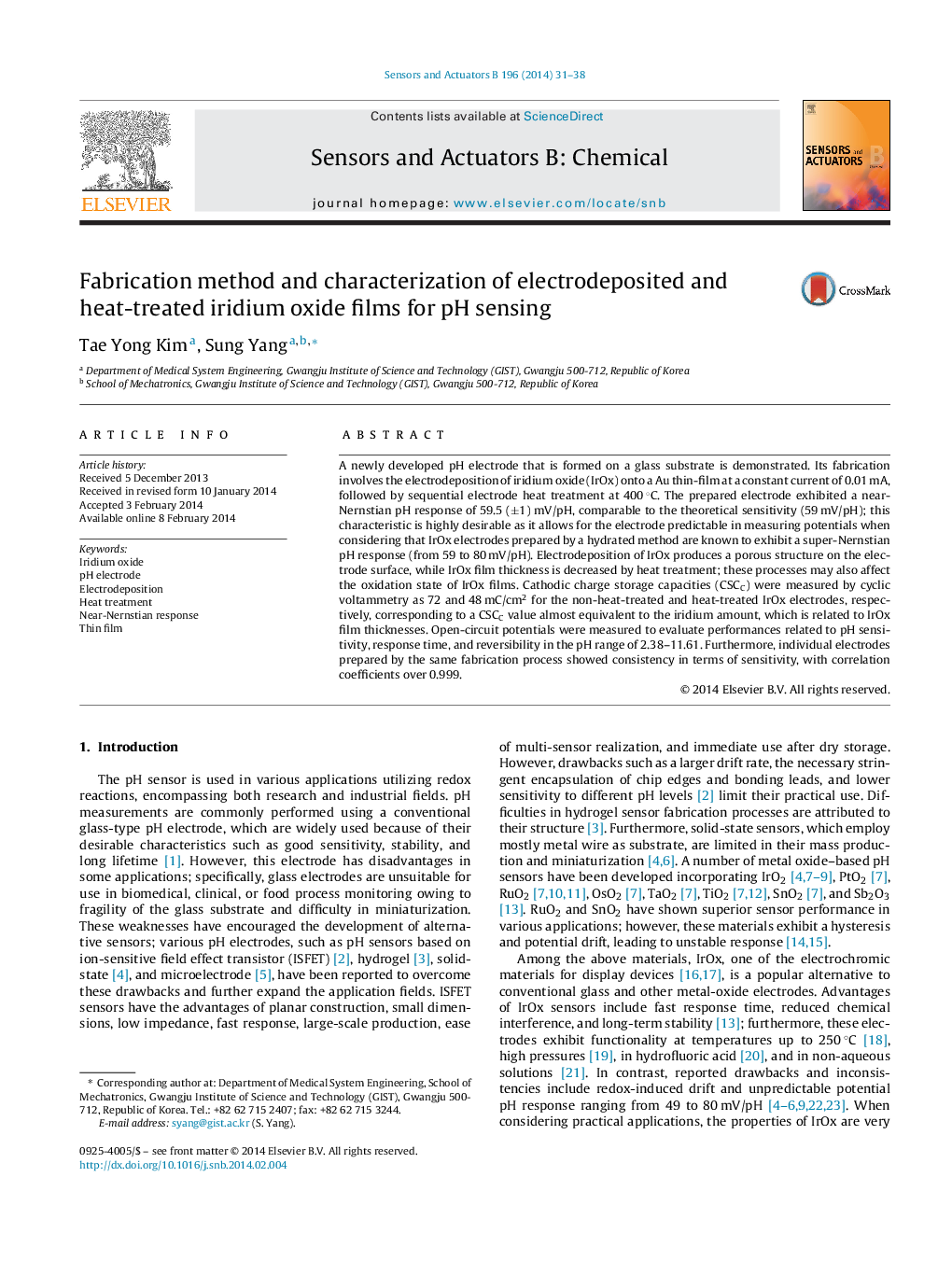| Article ID | Journal | Published Year | Pages | File Type |
|---|---|---|---|---|
| 750958 | Sensors and Actuators B: Chemical | 2014 | 8 Pages |
•The electrode is prepared by electrodeposition and then heat-treatment of iridium oxide.•The electrode exhibits the near-Nernstian pH response of 59.5 (±1) mV/pH.•Hysteresis of the electrode is negligible in the reversibility test.•The potential deviation is less than 10 mV between the electrodes.
A newly developed pH electrode that is formed on a glass substrate is demonstrated. Its fabrication involves the electrodeposition of iridium oxide (IrOx) onto a Au thin-film at a constant current of 0.01 mA, followed by sequential electrode heat treatment at 400 °C. The prepared electrode exhibited a near-Nernstian pH response of 59.5 (±1) mV/pH, comparable to the theoretical sensitivity (59 mV/pH); this characteristic is highly desirable as it allows for the electrode predictable in measuring potentials when considering that IrOx electrodes prepared by a hydrated method are known to exhibit a super-Nernstian pH response (from 59 to 80 mV/pH). Electrodeposition of IrOx produces a porous structure on the electrode surface, while IrOx film thickness is decreased by heat treatment; these processes may also affect the oxidation state of IrOx films. Cathodic charge storage capacities (CSCC) were measured by cyclic voltammetry as 72 and 48 mC/cm2 for the non-heat-treated and heat-treated IrOx electrodes, respectively, corresponding to a CSCC value almost equivalent to the iridium amount, which is related to IrOx film thicknesses. Open-circuit potentials were measured to evaluate performances related to pH sensitivity, response time, and reversibility in the pH range of 2.38–11.61. Furthermore, individual electrodes prepared by the same fabrication process showed consistency in terms of sensitivity, with correlation coefficients over 0.999.
